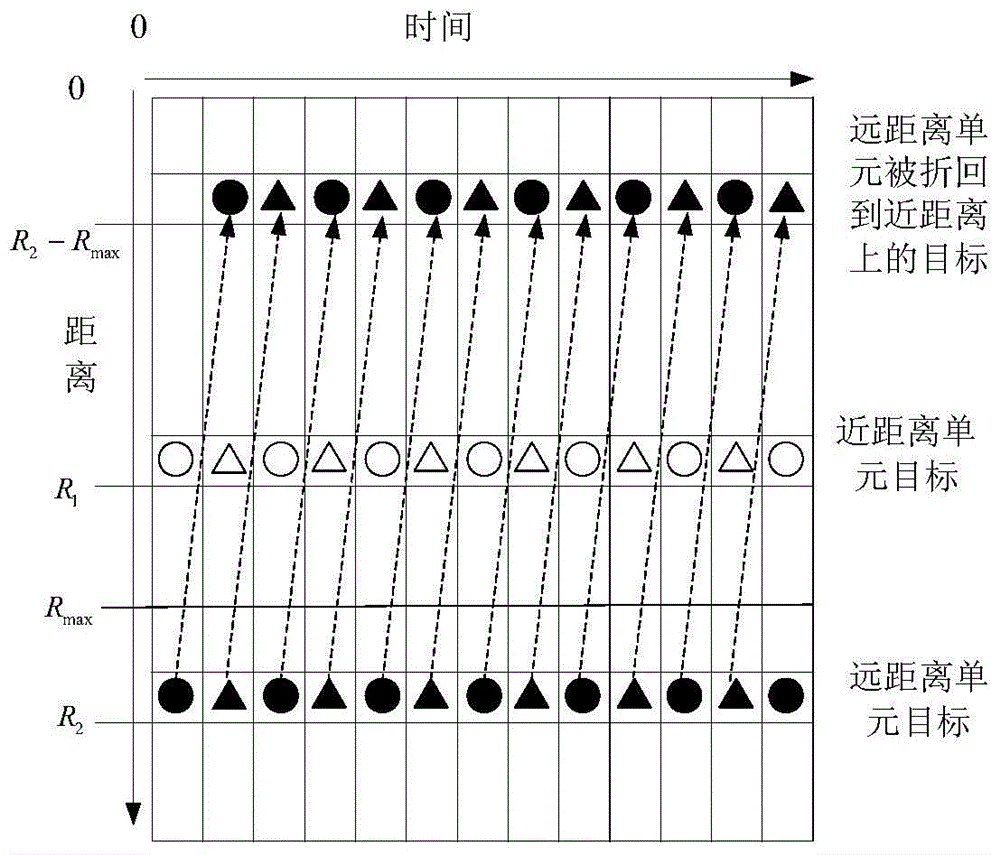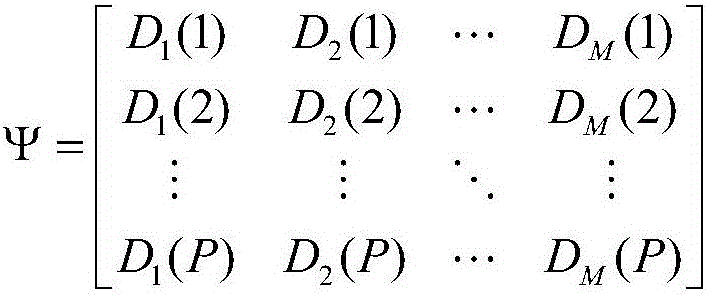A method for solving distance-velocity ambiguity based on changing signal modulation frequency
A speed ambiguity and distance solution technology, applied in the field of distance-velocity ambiguity, can solve the problems of prolonged pulse radar cycle, complex system implementation, affecting radar data update rate indicators, etc., to achieve the effect of improving tolerance and data update rate.
- Summary
- Abstract
- Description
- Claims
- Application Information
AI Technical Summary
Problems solved by technology
Method used
Image
Examples
Embodiment
[0061] Adopt the method of the present invention to carry out the distance-velocity ambiguity calculation to Ka frequency band radar, wherein the number M of coherent accumulation is set to 512, and the received echo data length U=667, setting has only one target, and measured target and radar The distance is 1.55km, and the moving speed of the target is 110m / s. The specific distance-speed fuzzy calculation is as follows:
[0062] (1) Initialize the radar system parameters, where the farthest operating distance R max = 2km, target maximum speed V max =220m / s, the shortest operating distance R min =1.5km, distance resolution Δτ=0.75m, Doppler resolution Δf=16Hz, system signal wavelength λ=8mm;
[0063](2) Calculate the number of pulse signals N=round(8R max V max / (cλ)), N=2 is obtained by calculation, that is, the method needs two kinds of pulse signals to realize the distance-velocity fuzzy calculation;
[0064] (3) Calculate the pulse signal bandwidth B=c / (2Δτ), and cal...
PUM
 Login to View More
Login to View More Abstract
Description
Claims
Application Information
 Login to View More
Login to View More - R&D
- Intellectual Property
- Life Sciences
- Materials
- Tech Scout
- Unparalleled Data Quality
- Higher Quality Content
- 60% Fewer Hallucinations
Browse by: Latest US Patents, China's latest patents, Technical Efficacy Thesaurus, Application Domain, Technology Topic, Popular Technical Reports.
© 2025 PatSnap. All rights reserved.Legal|Privacy policy|Modern Slavery Act Transparency Statement|Sitemap|About US| Contact US: help@patsnap.com



